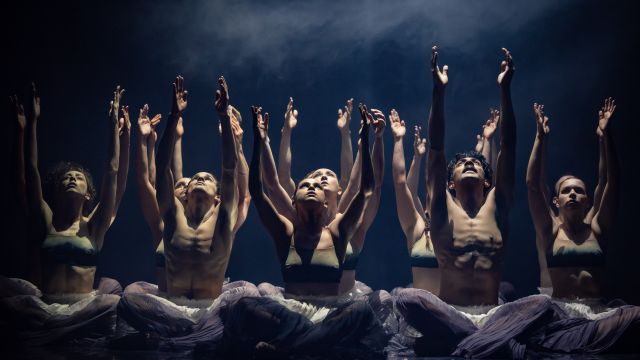Horizon
In Bangarra’s remarkable history, its second artistic director Frances Rings takes a logical next step by forging a collaboration with First Nation artists from another country. From across the Tasman, Maori choreographer Moss Te Ururangi Patterson elicits from 16 Indigenous Australians an enthralling dance voyage through the winds, waters and people of his home country around Lake Taupo in Aotearoa.
Underpinning all is a reverence for country and cultural responsibility, for elders, family and the interconnectedness of land, sea and sky which is nothing new for these Indigenous dancers.

This major work, The Light Inside, begins with a handful of short dance stories from around the sea from Torres Strait Islander choreographer and notable Bangarra dancer Deborah Brown. Small groups evolve from the mirrored sea or dance along the rocky shoreline of a reef, the dancers evocatively segueing into other forms and stories, before the reef then stretches upwards to form what is the cliff and fresh waters world of Patterson’s country.
We’re drawn into the stories embedded in cultures from both around the sea and fresh water. And they are handsomely realised by this creative team, the set designed by Elizabeth Gadsby, beautifully lit in shadows or spots by Karen Norris with the dancers often draped in ephemeral, autumnal-shaded cloth by Jennifer Irwin. Lead dancer Daniel Mateo dominates as his long body arcs high above the others.

Patterson excels in his group choreography, as pulsing organic masses move amoebic-like, with dancers flinging out arms or being shot high into the air, driven by Steve Francis’ varied score with Brendon Boney. As this fluid group constantly reassembles, the choreography is by end mesmerising and unceasing.
The program begins with a shorter 20-minute work by Torres Strait Islander Sani Townson celebrating the universe and night sky, and his family clans and the predatory crocodile on the Strait’s most northern island of Saibai. The men in black have scales encrusted to their bodies, while the women keep rolling around their shoulders, inexplicably costumed in what looks like blue evening dresses by Clair Parker. Amy Flannery’s score is toe-tapping but the music and choreography is slow to develop.

Thanks to Gadsby’s angled use of a huge overhead mirror, the dancers are also reflected out to us in seemingly different configurations, which becomes yet more striking when the glass floor beneath the dancers starts beaming up mystical projections from AV designer David Bergman.
Together Horizons offers some exhilarating choreography and startling production values which are typical of Bangarra and add so much to their storytelling.
Martin Portus
Photographer: Daniel Boud
Subscribe to our E-Newsletter, buy our latest print edition or find a Performing Arts book at Book Nook.

